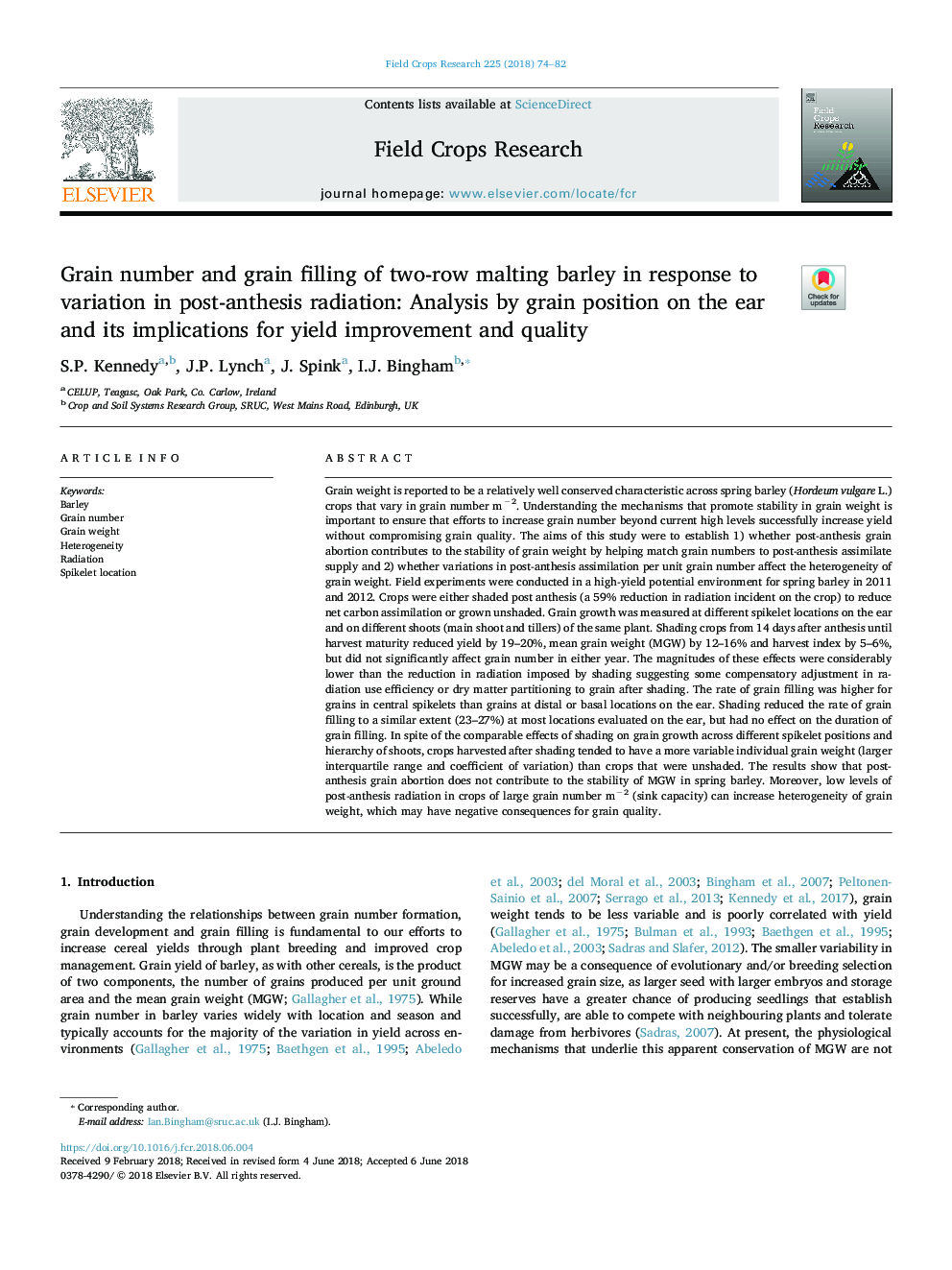| کد مقاله | کد نشریه | سال انتشار | مقاله انگلیسی | نسخه تمام متن |
|---|---|---|---|---|
| 8879086 | 1624638 | 2018 | 9 صفحه PDF | دانلود رایگان |
عنوان انگلیسی مقاله ISI
Grain number and grain filling of two-row malting barley in response to variation in post-anthesis radiation: Analysis by grain position on the ear and its implications for yield improvement and quality
ترجمه فارسی عنوان
شماره دانه و پر شدن دانه جو دو سری در پاسخ به تغییرات تابش پس از گلدهی: تحلیل موقعیت دانه بر گوش و پیامدهای آن برای بهبود عملکرد و
دانلود مقاله + سفارش ترجمه
دانلود مقاله ISI انگلیسی
رایگان برای ایرانیان
کلمات کلیدی
جو، شماره دانه، وزن دانه، ناهمگونی، تابش، محل زاد و ولد،
موضوعات مرتبط
علوم زیستی و بیوفناوری
علوم کشاورزی و بیولوژیک
علوم زراعت و اصلاح نباتات
چکیده انگلیسی
Grain weight is reported to be a relatively well conserved characteristic across spring barley (Hordeum vulgare L.) crops that vary in grain number mâ2. Understanding the mechanisms that promote stability in grain weight is important to ensure that efforts to increase grain number beyond current high levels successfully increase yield without compromising grain quality. The aims of this study were to establish 1) whether post-anthesis grain abortion contributes to the stability of grain weight by helping match grain numbers to post-anthesis assimilate supply and 2) whether variations in post-anthesis assimilation per unit grain number affect the heterogeneity of grain weight. Field experiments were conducted in a high-yield potential environment for spring barley in 2011 and 2012. Crops were either shaded post anthesis (a 59% reduction in radiation incident on the crop) to reduce net carbon assimilation or grown unshaded. Grain growth was measured at different spikelet locations on the ear and on different shoots (main shoot and tillers) of the same plant. Shading crops from 14 days after anthesis until harvest maturity reduced yield by 19-20%, mean grain weight (MGW) by 12-16% and harvest index by 5-6%, but did not significantly affect grain number in either year. The magnitudes of these effects were considerably lower than the reduction in radiation imposed by shading suggesting some compensatory adjustment in radiation use efficiency or dry matter partitioning to grain after shading. The rate of grain filling was higher for grains in central spikelets than grains at distal or basal locations on the ear. Shading reduced the rate of grain filling to a similar extent (23-27%) at most locations evaluated on the ear, but had no effect on the duration of grain filling. In spite of the comparable effects of shading on grain growth across different spikelet positions and hierarchy of shoots, crops harvested after shading tended to have a more variable individual grain weight (larger interquartile range and coefficient of variation) than crops that were unshaded. The results show that post-anthesis grain abortion does not contribute to the stability of MGW in spring barley. Moreover, low levels of post-anthesis radiation in crops of large grain number mâ2 (sink capacity) can increase heterogeneity of grain weight, which may have negative consequences for grain quality.
ناشر
Database: Elsevier - ScienceDirect (ساینس دایرکت)
Journal: Field Crops Research - Volume 225, 1 August 2018, Pages 74-82
Journal: Field Crops Research - Volume 225, 1 August 2018, Pages 74-82
نویسندگان
S.P. Kennedy, J.P. Lynch, J. Spink, I.J. Bingham,
